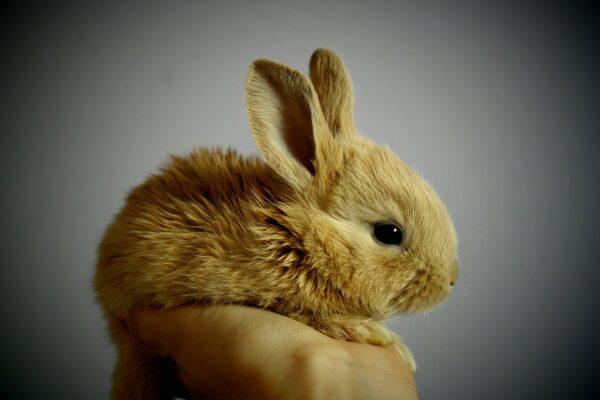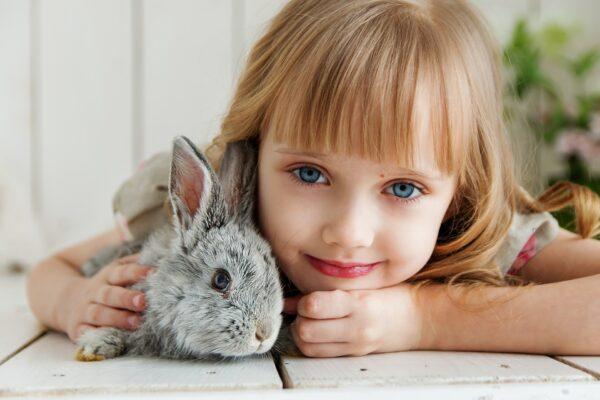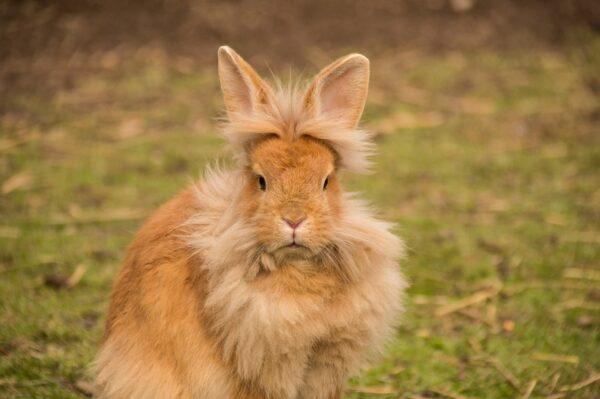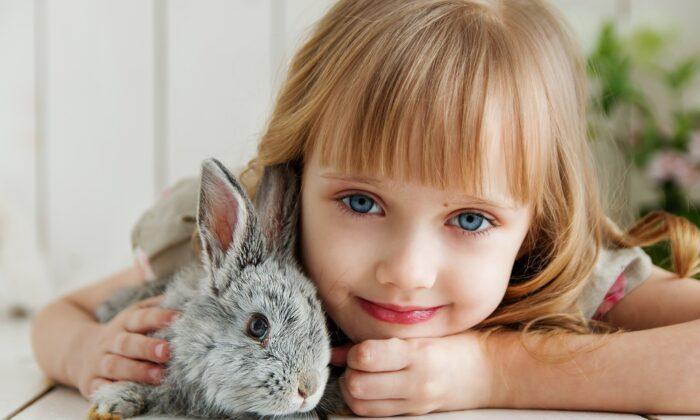In one scene from the 2006 British film, “Amazing Grace,” about William Wilberforce and John Newton, Wilberforce, a young British parliamentarian, picks up a large brown pet rabbit from a chair and carries it around while his friend, Prime Minister William Pitt, jokingly suggests the rabbit would make a fine meal. While rabbits have been common dinner fare throughout the ages, domestication of some rabbit species supposedly began in the 15th century by French monks, according to global animal welfare organization Four Paws International. From there, domestic rabbit breeding clubs were established throughout Europe and sundry size, build, coat color, and weights emerged so that rabbits now rank as the second most common specialty pet, after fish, according to the American Veterinarian Medical Association (AVMA).
In fact, although numbers are difficult to pinpoint, AVMA estimates rabbits are pets in 1,000-plus U.S. homes.

“They are the third most surrendered pets, for a variety of reasons,” said Paige. “Mostly because people don’t learn about them before purchasing them, but we also take in rabbits that are the result of hoarder situations or irresponsible breeding programs.”In 2017, National Geographic’s report on domesticated rabbits asserted: “Widespread misunderstanding of domestic rabbits has made them one of the most abandoned pets in the United States.” The focus noted that “Easter is bad for bunnies” because, as Paige explained, adults and children are wooed by the cozy, cuddliness of rabbits and fail to “look before they leap.” Eric Stewart, a member of American Rabbit Breeders Association (ARBA), headquartered in Knox, Pa., echoed the sentiment of misconceptions regarding rabbits. He said, “Although cute and loveable … rabbits can be quite aggressive with other rabbits and co-mingling is best done only when supervised.”
Stewart has been breeding rabbits for 35 years; he caught the rabbit bug after a 4H project at the age of 11. “This project started a life-long love of rabbits and prompted me to pursue a degree in Small Animal Science. Over the years I have raised many breeds, however I have continuously raised angoras for nearly 20 years as I have a fiber farm and harvest their wool to process 100% or blend with other fibers. I’ve been an ARBA licensed rabbit judge for 26 years and have judged shows throughout North America, Asia, and Europe.”
“I basically have three prima donnas in my house right now,” she quipped. “One, Mazie, a brown Netherland dwarf, who weighs about two pounds came from a hording situation; Charlotte, a white American Californian with a dark nose and dark ears, weighs nine pounds and came from the Wade County Animal Center because she was found as a stray and was skin and bones; and, Codie, a Dutch all-white, four-pound rabbit with blue eyes and luxurious fur was born to a pregnant rabbit taken in as a foster rabbit.”She pointed out that each rabbit has a different personality and comfort level with affection and interaction. “Some are squirmers … don’t want to be held. Some will sit in your lap. Just because a rabbit is small doesn’t mean they will be easier to control. Anyone interested in having a pet rabbit, or rabbits, needs to determine how much time they’re going to have to spend. Some rabbits are fine being alone when you’re not there, while others might need a companion rabbit. But then sometimes rabbits don’t get along.” Or they have behavioral issues, and since “rabbits are prey animals and do not recognize the same social instincts as cats or dogs,” they can be difficult to train.

Paige noted that one Triangle Rabbits’ volunteer fostered a rescue that attacked people’s feet. “Triangle Rabbits is all foster-based, so people just keep the rescued rabbits in their homes until they can be adopted. Fostering is a way to see if it works out before adopting and allowing a rabbit settle in, and we will take back any rabbit that is not working in a person’s home.”
Triangle Rabbits partners with the American Society for the Prevention of Cruelty to Animals in Raleigh and is the N.C. chapter of the House Rabbit Society. Plus, they work with local veterinarians. In fact, Paige learned about Triangle Rabbits when she contacted House Rabbit Society to find out how to take care of a stray rabbit hanging around outside their home. She said that often people who become exasperated with rabbit care, will just release them into the wild, but domesticated rabbits typically cannot survive in the wild.
“Wild rabbits are very different than domestic rabbits, not just biology and color,” said Paige. “I noticed my first rabbit staying in the same area of the townhouse where I was living at the time. I scooped him up with a fishing net, learned what rabbits eat and how to take care of them [through House Rabbit Society], and decided to keep him. He was very sweet and I could tell right away he wasn’t wild. He became very attached me and wanted to be where I was. But some rabbits never really get on with people. People have to realize that about rabbits going into pet ownership.”
Said Steward, “Rabbits’ small size makes them popular pets for children, but that does not mean that they are ideal for holding or carrying. They possess a more delicate skeletal system. Rabbits are best loved and petted with their four feet planted on a solid surface or your lap. The number-one mistake is anthropomorphism, applying human thoughts, perceptions, emotions, and traits to rabbits. Rabbits are prey animals by nature, therefore consider their needs and how they may perceive the world around them to provide a more healthful environment.”

“Rabbits can thrive in colder temperatures but do not tolerate higher temperatures therefore should be maintained in an area that remains relatively cool and dry,” informed Stewart. Another misconception involves rabbit nutrition. “Rabbits do not and should not live on carrots as a staple in their diet,” said Stewart.Added Paige, “They eat hay and timothy-hay based pellets. They can have some greens, because they are good for digestion. And they can have some fruit, but mostly as treats. Most importantly, rabbits cannot be given people food, which will kill them faster than anything. Their gut needs to keep moving, and they need the right food for their digestion. They cannot vomit and can develop a blockage if not fed properly.”
Besides behavior and nutrition, other common concerns are house training and chewing. Paige explained that, like with all animals, routines are important. Rabbits can be litter box trained with a consistent regiment. “The best way to do that is to put hay in the litter box with rabbit-safe litter. They eat the hay while they are eliminating.”
Spaying or neutering a rabbit “cuts down on them urinating everywhere and marking their territory,” she said, but even if they are litter trained, rabbits will sometimes leave their pellet-sized fecal matter in areas of the home.
Rabbit-proofing a home by removing chewing temptations, as well as offering plenty of safe chew toys, cuts down on rabbits chewing items deemed off limits.







